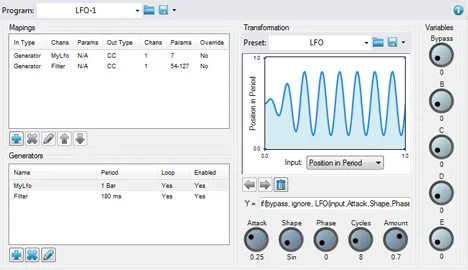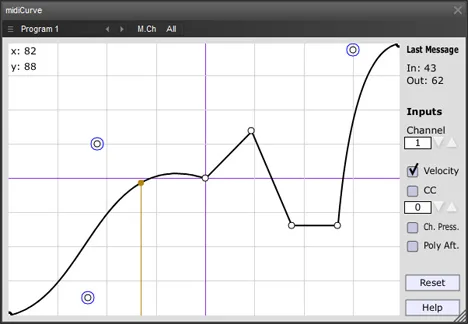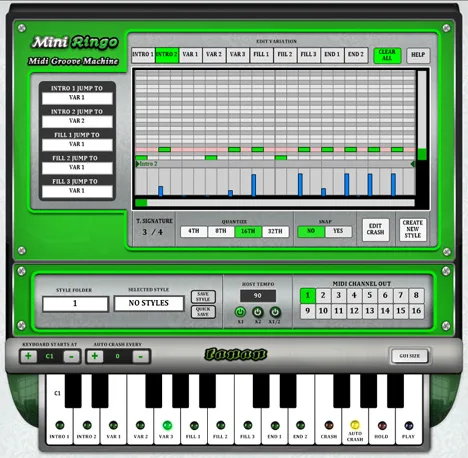Introducing MidiFripp: A New Perspective on MIDI Effects
The world of digital music is constantly evolving, offering musicians and sound designers new tools to realize their most ambitious ideas. Among the variety of virtual studio technologies (VSTs), a special place is occupied by plugins that work not directly with sound, but with MIDI data. MidiFripp, a development from the Nay-Seven studio, which offers a fresh look at the possibilities of MIDI processing, belongs to this category.
Unlike conventional audio effects that change the characteristics of the sound itself (reverberation, delay, compression, etc.), MIDI plugins manipulate note information: time, pitch, velocity, and other parameters. MidiFripp embodies the concept of MIDI delay – an effect that repeats incoming MIDI messages after a certain period of time, creating a kind of “echo” of notes.
Features and Functionality
The key difference between MidiFripp and simpler MIDI delays is its dual structure. The plugin has two independent delay lines that can work in parallel, creating two “voices” of repetitions. This allows you to generate much more complex and dynamic rhythmic and melodic patterns compared to effects that only have one echo.
Dual Delay for Double Inspiration
The first “voice” of the delay in MidiFripp works on a classic principle: it simply plays the incoming note after a set amount of time. However, the real magic begins with the second “voice”. This second delay is much more flexible. It can be set independently from the first, which opens up space for experimentation.
The ability to configure the second “voice” means that you can not only get even repeats, but also create offset, non-synchronous, or even polyrhythmic patterns. This makes MidiFripp a powerful tool for adding movement and complexity to even the simplest MIDI parts. Imagine what you can do with a simple long note: turn it into a pulsating rhythmic groove or a cascade of arpeggios unfolding in time.
Creative Application of MidiFripp
Due to its unique structure, MidiFripp is used in a variety of musical genres and production styles:
- Next-generation arpeggiators: Use MidiFripp to turn static chords into dynamic arpeggios. By adjusting the delay time and the parameters of the second “voice”, you can create unique, unexpected arpeggio patterns that will differ from standard arpeggiators.
- Rhythmic experiments: The plugin is ideal for creating interesting and unusual rhythmic lines for drums, percussion, or synthesizer sequences. The double delay allows you to create syncopated rhythms, polyrhythmic layers, or “jamming” effects.
- Melodic echoes and textures: Add depth and movement to single melodic lines. Delaying notes can create a developing echo effect or overlap notes, forming denser and more interesting textures. This can be especially effective with instruments that have a long sustain.
- Idea generation: Sometimes the best ideas come during experiments. MidiFripp encourages the exploration of new sound spaces, allowing you to quickly test different rhythmic and melodic combinations. Simply dragging sliders or changing parameters can lead to completely unexpected and inspiring results.
- Live performances: Thanks to the intuitive interface, MidiFripp can be a great tool to use in live performances. The ability to quickly change the delay parameters “on the fly” allows you to add variability and interactivity to the performance.
The intuitive way of working, mentioned by the developer, is a significant plus for a plugin with such flexible functionality. Instead of complex menus and numerous parameters, MidiFripp strives to give the user the opportunity to quickly understand how their actions affect the MIDI output and promptly adjust the effect according to their creative intentions.
Conclusion
MidiFripp from Nay-Seven is more than just a MIDI delay. It is a flexible and powerful tool for manipulating MIDI data, capable of adding originality and dynamics to your music projects. If you work with MIDI in a DAW running Windows and are looking for new ways to creatively experiment with rhythm, melody, and structure, be sure to try MidiFripp. It can be a valuable addition to your arsenal of virtual plugins.



